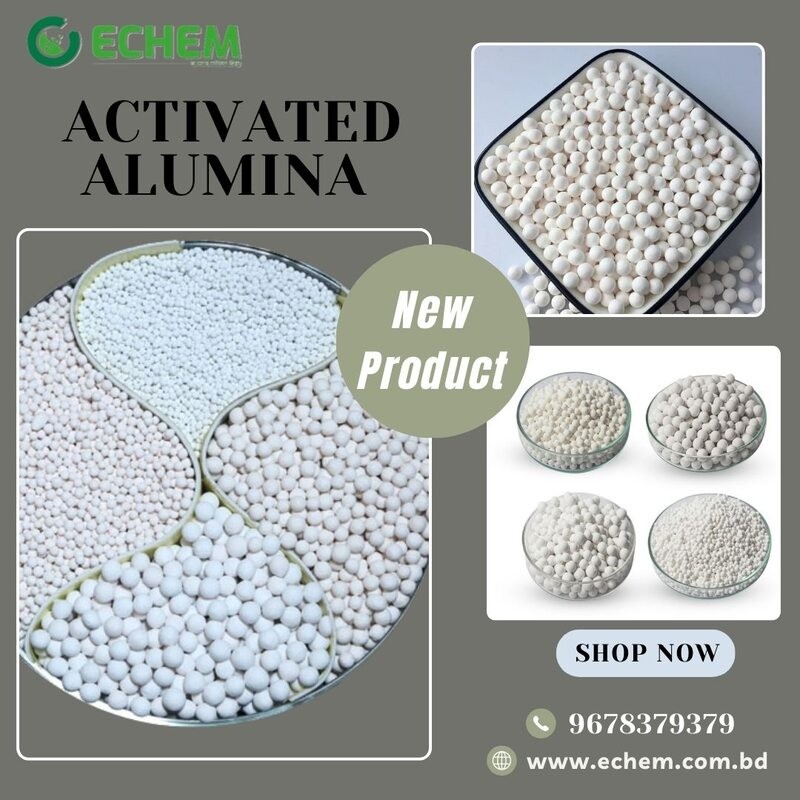Activated Alumina – এক্টিভেটেড এলুমিনা
Activated alumina is a highly porous form of aluminum oxide (Al2O3). It is produced by heating bauxite ore to high temperatures, which removes water and creates a network of tiny pores within the material. These pores give activated alumina a large surface area, making it highly effective for adsorption and other applications.
Uses:
Activated alumina has a wide range of applications across various industries, including:
- Desiccant: It is widely used as a desiccant to remove moisture from gases and liquids. This is crucial in industries like natural gas processing, air drying, and pharmaceutical manufacturing.
- Catalyst Support: It serves as an excellent support material for catalysts in various chemical reactions. Its high surface area provides a large surface for the catalyst to be dispersed on, enhancing its activity.
- Water Treatment: Activated alumina is used to remove fluoride from drinking water. It can also be used to remove arsenic and other contaminants.
- Chromatography: It is used as a stationary phase in chromatography for the separation of different compounds.
- Adsorbent: It can adsorb various substances, including water vapor, organic compounds, and heavy metals.
If you'd like to know more about this chemical or need any analysis report regarding this chemical then contact us: support@echem.com.bd.
Activated Alumina – এক্টিভেটেড এলুমিনা
- High Surface Area: The large surface area of activated alumina is its key feature, enabling it to adsorb a significant amount of substances.
- Chemical Stability: It is stable over a wide range of temperatures and pH values.
- Mechanical Strength: It is a strong and durable material that can withstand high pressures and abrasion.
- Non-Toxic: It is generally considered non-toxic and safe to use in various applications.
- Regenerable: In many cases, activated alumina can be regenerated by heating or chemical treatment, making it a cost-effective option.

Login To Comment